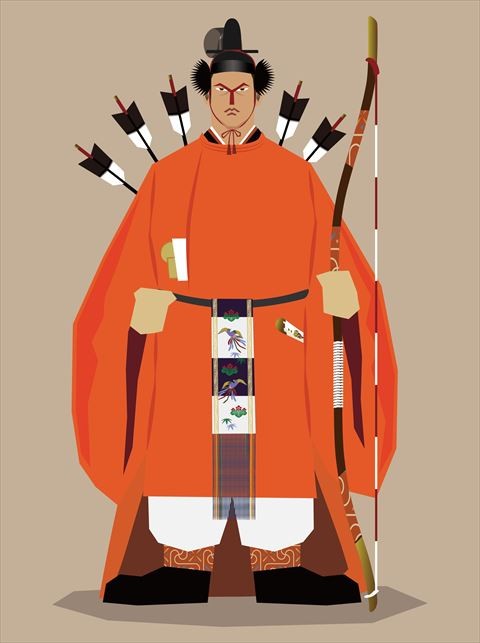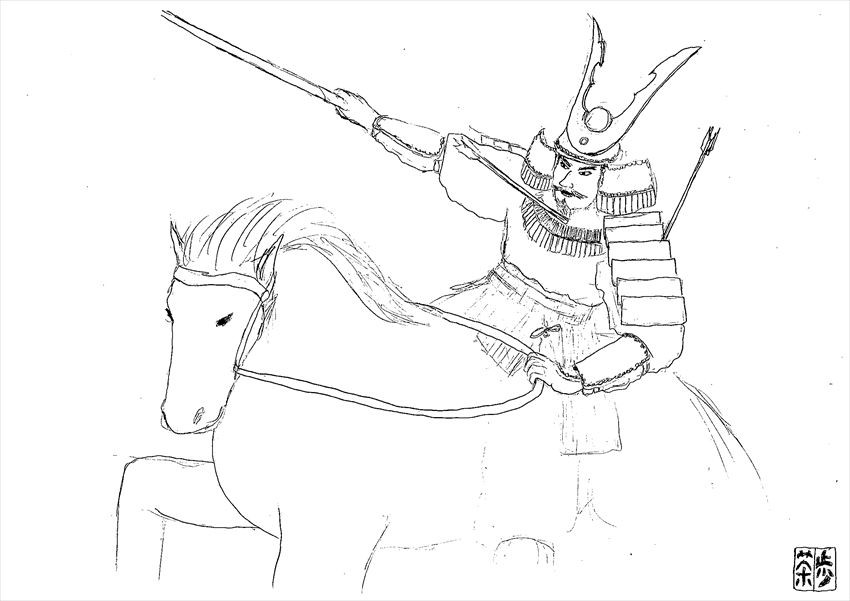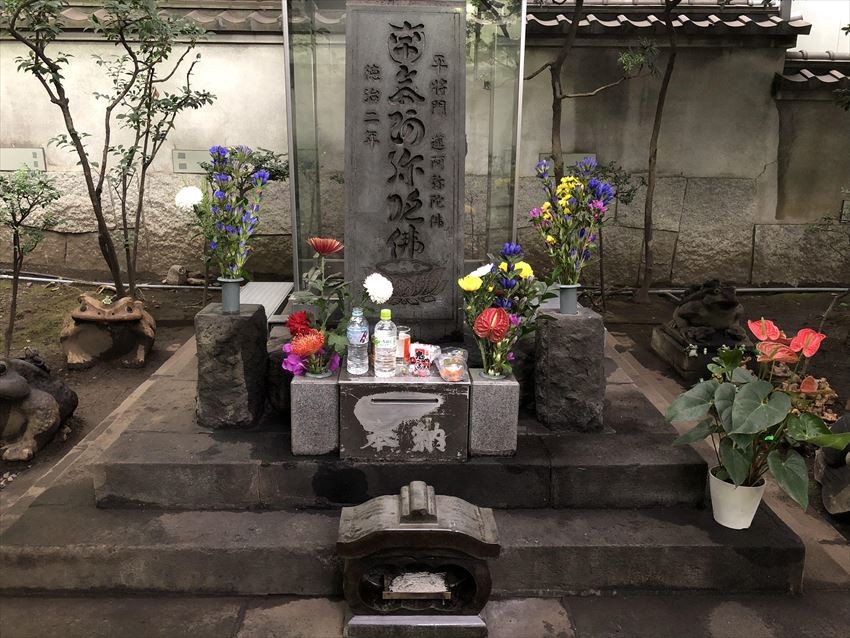
Have you heard of the Three Great Wrath of Japan? In Japanese, it is called “日本三大怨霊” (Nihon San Dai Onryō), emphasizing that the Onryō actually means Vengeful Spirit. One of them is Taira no Masakado, whose spirit is now enshrined in Kanda Myōjin as one of the three Kami-sama there. Let’s take a deep look at his story in life and a short while after his death.
Taira no Masakado: A Noble Beginning

A descendant from the 50th emperor of ancient Japan, Emperor Kammu (桓武天皇), Masakado of Taira Clan (平将門 Taira no Masakado), born around year 903, was a son of Taira no Yoshimasa (平良将), who served as Chinjufu-shōgun (鎮守府将軍 Commander-in-Chief of the Defense of the North) in Heian Period. His former name was Sōma no Kojiro (相馬小次郎) as he grew up in Soma District, the hometown of his mother. After serving the imperial court, he moved back to his hometown in Shimōsa Province.
The Turning Point
When his father passed away, his relatives coveted the lands he would inherit. Since this was before the firstborn inherit system was written, his relatives began to plot against him. The breaking point was his own uncle, Taira no Kunika (平国香), working with the Minamoto Clan (Kunika was married to the Minamoto at the time), ambushed him in year 935 at the Battle of Nomoto (野本合戦). Yet Masakado, being the talented and intelligent warrior, turned the table and won against Minamoto no Tasuku (源佐), then invaded their territory, ransacked and burned down the lands, including slaying his own uncle. He was called by the imperial court for interrogation but was pardoned.
Tengyō no Ran (天慶の乱): The Insurgency of Taira no Masakado
The familial disputes continued with other relatives over the years and he was called by the court many times, even though he tried to stay within the limits of imperial laws. The chains of dispute included his other uncle Yoshikane (平良兼), and then his cousin Sadamori (平貞盛). At one point in year 939, he stopped answering the call from the imperial court and instead, he marched into the lands of Hitachi province to apprehend Sadamori. After Sadamori fled, Masakado led political reforms in Kantō region, wresting controls from the oppressing governors and help the commoners. The first was Hitachi, then Shimotsuke and Kōzuke. Then he set his force onto Musashi, Kazuwa, Awa, Sagami, Izu then Shimōsa.
Masakado sent a letter to his patron, Fujiwara no Tadahira (藤原忠平), to appease that he was defamed, and the action was to eliminate his enemies and protect the civilians.

The imperial court instead perceived him as a threat and responded by sending forces to apprehend Masakado, putting many noble warriors in the army including his cousin Taira no Sadamori and his former ally Fujiwara no Hidesato (藤原秀郷). Outnumbered by more than ten to one, the battle at the northwestern of Shimōsa ended with Masakado killed by an arrow. His head was brought back to Heian-kyō for display in year 940.
Legends Surrounding the Death of Masakado

Some legends said his head did not rot and the facial expression was as if he was still alive. Some even exaggerated that his face turned into a grin, looking scarier each passing day and started taunting. The official writing on his tomb says after three days, other legends say after three months, but a pale white light appeared and flew east, and his head was gone. Most interpreted that his head flew back to the Kantō region. He made many stops at several location before finally landing at Shibasaki Village (柴崎村), on the site of now-Masakado’s burial mound (将門塚), where villagers found, cleaned, and gave a proper burial to his decapitated head. The location was a part of the original Kanda Myōjin (神田明神); a Shintō Shrine.

The Legacy of Taira no Masakado
He was a precursor of Bushidō, exemplar in the spirit of fighting against injustice and standing up for the weak. Thus, Masakado was worshiped as the patron of Bushidō for Edokko (江戸っ子 people of Edo) as well as a deity of Kanda Myōjin
As of the legends after his death and the other locations he landed and where was his body buried, be sure to check out the next installation!

Comments